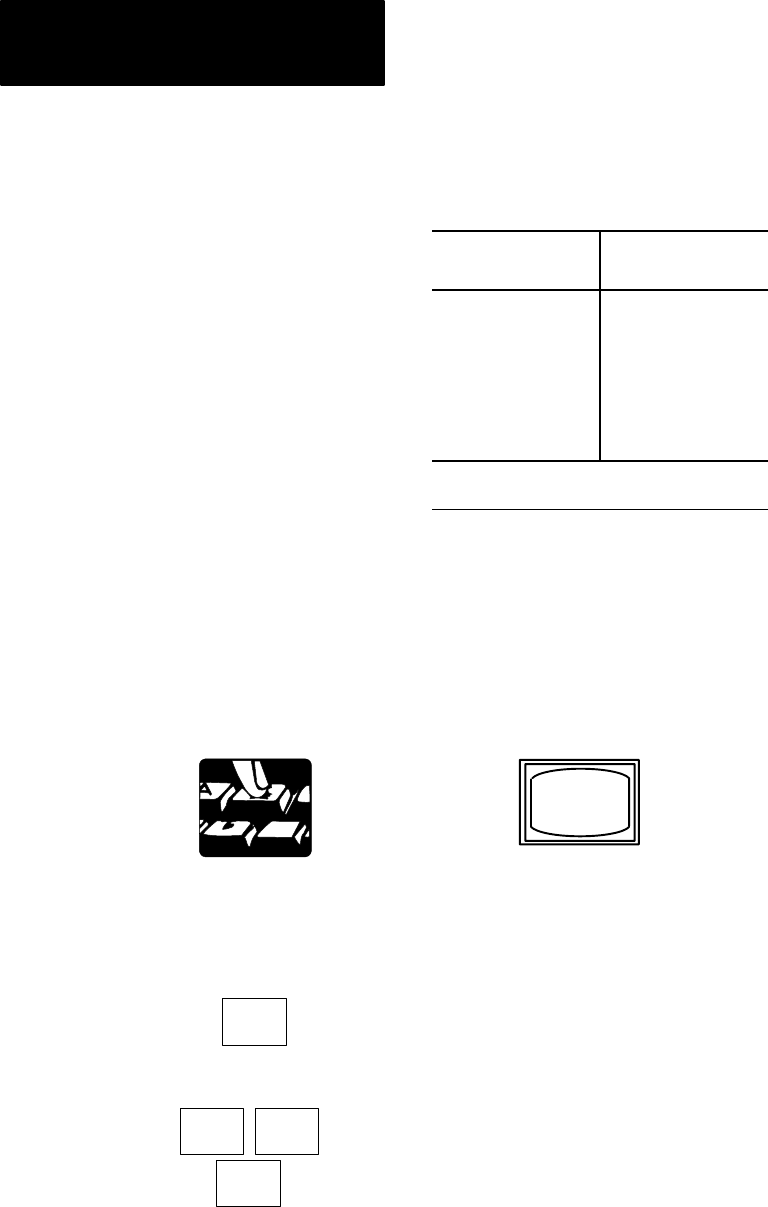User Manual Owner's manual
Table Of Contents
- 1772-6.5.8, Mini-PLC-2/02, -2/16, -2/17 Processor, User Manual
- Important User Information
- Summary of Changes
- Table of Contents
- 1 - Using This Manual
- 2 - Fundamentals of a Programmable Controller
- 3 - Hardware Features
- 4 - Installing Your Programmable Controller
- 5 - Starting Your Processor
- 6 - Maintaining and Troubleshooting Your Processor
- 7 - Memory Organization
- 8 - Scan Theory
- 9 - Relay-Like Instructions
- 10 - Program Control Instructions
- 11 - Timers and Counters
- 12 - Data Manipulation and Compare Instructions
- 13 - Three-Digit Math Instructions
- 14 - EAF Math Instructions
- 15 - EAF Log, Trig, and FIFO Instructions
- 16 - EAF Process Control Instructions
- 17 - Jump Instructions and Subroutines
- 18 - Block Transfer
- 19 - Data Transfer Instructions
- 20 - Bit Shift Registers
- 21 - Sequencers
- 22 - Selectable Timer Interrupts
- 23 - Report Generation
- 24 - Program Editing
- 25 - Programming Techniques
- 26 - Program Troubleshooting
- A - Specifications
- B - Processor Comparison Chart
- C - Number Systems
- D - Glossary
- E - Quick Reference
- Index
- Back Cover

MS,nnn
ESC ESC
RETURN
ESC
Report Generation
Chapter 23
23-4
Table 23.B
Example Message Control W
ord and Message Number Relationship
Control
Words
Message Numbers
200
201
202
203
204
205
206
207
010017
110117
210217
310317
410417
510517
610617
710717
Important: This table assumes user selected
messages control words begin at 200
8
.
Message Store - MS
Accessible only in the Program or Remote Program mode, use this
command to enter messages in memory. Access the message store
command by:
You must be in report generation.
MS,nnn appears on the screen.
nnn = message number
A prompt READY FOR INPUT message is displayed. Any subsequent
keys pressed then become part of the message. If you try to use a message
number that already exists, the terminal displays MESSAGE
ALREADY EXISTS.
A prompt END OF MESSAGE STORE appears on the screen.
The display returns to the ladder diagram.
Each key you press, except [Shift], [Ctrl], [Esc], or [Rub Out] generates a
code that is stored in one byte of memory. This includes ASCII and
graphic characters as well as other keys such as [Rub Out] or [Esc].
You can enter messages which when reported give the current value of a
data table word or byte. The messages can report the on or off status of a
data table bit by using the delimiters shown in Table 23.C.










